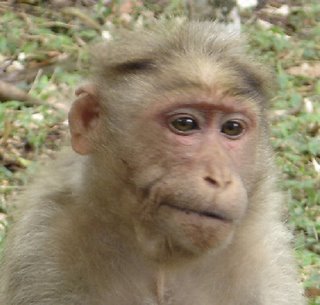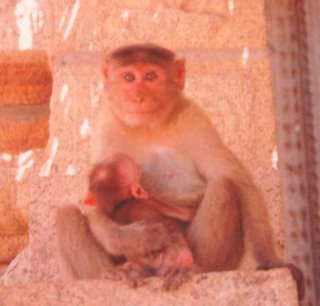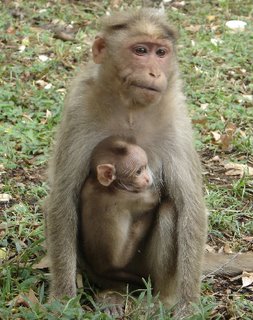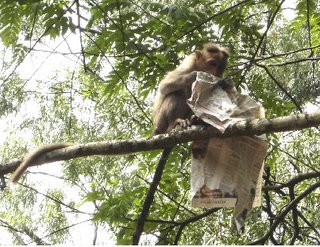One day I received a call from my poet friend LP. He wanted to know how and what to feed squirrel babies. I had read about people rearing squirrels and also that when they grow up they go out into the trees but still visits their foster parents once in a while. Though I knew that they eat nuts and since they are mammals they sure would drink milk. He asked me whether milk can be fed using a dropper/ink filler. I contacted one of my veterinarian friends. He also suggested a dropper but it should not be forced for it may choke the baby. My friend asked me to visit their squirrel babies. I rushed with my camera.

LP's rendezvous with the baby squirrles happened by accident. That morning LP and wife C left their home to the bus stop. They heard high pitched cries of squirrel babies near the gate of a house. They saw two squirrel babies. They also saw a crow on the gate. They sensed danger and chased the crow away. They waited there for some time hoping for the return of the mother squirrel. It was getting late for them. They knocked on the door of the house in front of which the squirrel babies were screaming and they requested the lady of the house to keep the squirrel babies in a basket and to release them if their mother comes around. If their mother fails to come, they said they would take them to their house in the evening. Carefully they placed them in a basket.

On their return in the evening the lady said that their mother has not arrived and she was doubtful of mother squirrel’s survival. She also said the babies have not eaten anything though they were given banana, rice etc. LP and C took the squirrel babies to their house and it was then they called me.
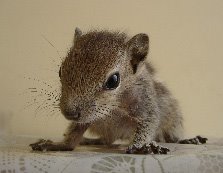
LP brought an ink filler and tried feeding milk. They drank a little bit. To improvise it, he wound a rubberband in front of the ink filler. It acted as a grip for the babies to hold on with their front legs while drinking milk. They recovered slowly and in a few days they became milk guzzlers. Though the quantity of milk they were drinking was less, they needed to be fed frequently- once in 3-4 hours. LP stopped going outside and even if he went he would return with in 3 hours to feed them. His midnight sleep also was in breaks as he used to get up in the night 2 times to feed them. LP said that one was a male and another female and he used to call them Chanti and Putti. Chunty was very weak and they were very much concerned about its survival and they used to take special care of him. Gradually they graduated from milk to bananas, apples. They tried all types of fruits. However rice flour was their favourite food.

They were scampering all around the house. They were recognising the voice of their foster parents and used to respond whenever they called. LP rolled a mat and kept it in a corner and were allowing them to climb them so that they can practice tree climbing. After 2 months they used to leave them on their balcony. Whenever they saw a shadow of a crow or heard the voice of a crow they would rush inside the house. Later they started to go out in to the terrace and return in the evening to the house. One day they did not return and C was worried. LP comforted her, saying they were no more babies and it is inevitable that they should leave them. After 2 days they returned, but not together. Now Chunty and Putti were living seperately on their own.

It is more than One year now. They are fully grownup and have their own mates. They visit LPs almost everyday and respond to their calls. Still today they buy a lot of eatables for them- corn, peanuts, rice flour and leave them outside where they regularly come to eat. They recognise their foster parents and eat from their hand. Now, who adopted whom is not yet clear.


